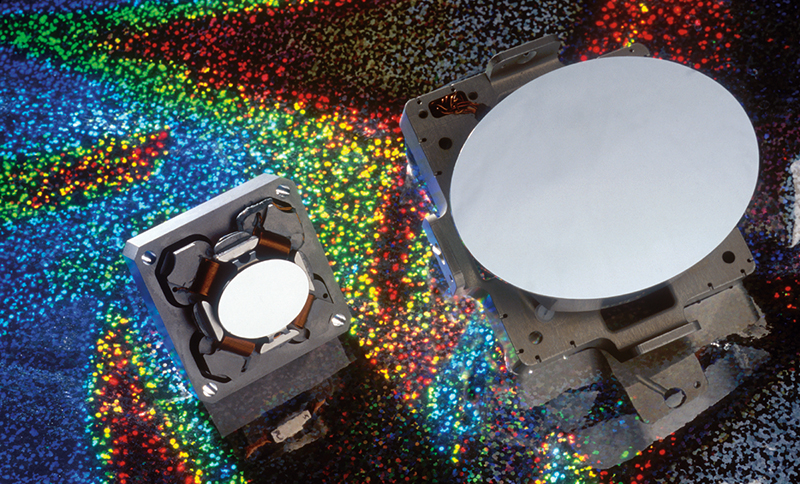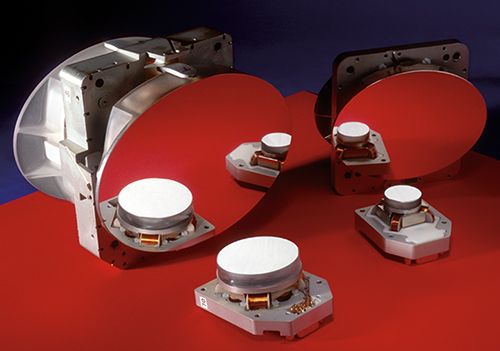
Mirrors Steer NASA in the Right Direction
A 19th Century measurement system that paved the way for Albert Einstein's Theory of Relativity is still being used by NASA to answer questions about the size and age of stars and planets that make up the universe. First applied to astronomy in 1883 by Nobel Prize recipient Albert Michelson, interferometry is currently being utilized to measure precise angles and distances of various elements throughout space. Furthermore, this unique study of wave lengths will be the focus of the Space Interferometry Mission (SIM), a major initiative that is under development by NASA's Jet Propulsion Laboratory (JPL). Scheduled for launch in 2009, SIM intends to seek out new planets by providing measurements several hundred times more accurate than those from previous programs.
In designing the mission, JPL used combined fast-steering and alignment mirrors, from Longmont, Colorado-based Left Hand Design Corporation, in test beds to assure that the devices would provide accurate measurements when applied to a space interferometer. These mirrors are capable of correcting distortions in the structure of an interferometer that result during launch and temperature changes. Left Hand Design's mirrors can also react at high frequencies to offset structural vibrations produced from such things as reaction wheels used to maintain the overall alignment of the space interferometer.
Left Hand Design completed the production of the mirror technology, better known as fine-steering mirrors, through 1995 Phase I and 1996 Phase II Small Business Innovation Research (SBIR) contracts with JPL's Interferometric Astronomy group. As a result, Left Hand Design was able to deliver a large-travel, high-bandwidth fine-steering mirror that satisfied JPL's needs and offered design solutions with its compact, lightweight, and low-powered characteristics. In Phase I, the company constructed a prototype that would serve as the backbone for a family of fine-steering mirrors of varying sizes and substrate materials. This was a unique situation, considering that hardware is typically not developed in the first phase of an SBIR contract.
During Phase II, JPL and Left Hand Design produced a more advanced mirror based on enhanced versions of the actuator, flexure suspension, sensor, and mirror substrate technology developed in Phase I. Design analysis for this model—which is intended for more demanding, space-based applications—led to many lessons learned, allowing the company to produce an apparatus that is more capable of surviving the launch environment, and focus on maintaining mirror flatness over the space operating temperature range. Other design improvements led to increased sensor bandwidth and higher servo control bandwidths, which ultimately provide fast and accurate control needed for interferometrical measurements. For example, the mirrors stabilize the line-of-sight of a telescope to less than a micro-radian.
Prior to working with JPL, Left Hand Design accumulated years of experience designing technologies related to fine-steering mirrors, including flexures, actuators, sensors, and light-weighted mirror substrates, based on a broad set of requirements for large applications. Presently, the work resulting from the collaboration with NASA represents the company's main line of products for the commercial sector. Aerospace-related applications include: image motion compensation; interceptor seekers for the U.S. Army and Navy; Earth observation and resource monitoring from spacecraft and airborne platforms; space astronomy; helicopter-based surveillance; and interferometric metrology. Left Hand Design's fine-steering mirrors have also penetrated the commercial marketplace with non-aerospace applications, including laser communications, video cameras, infrared inspection, solar observatories, and bathymeters. These cost-effective, commercial mirrors perform a variety of functions, such as scanning, alignment, chopping, tracking, pointing, and beam stabilization. Potential future applications include laser surgery and photolithography.
Left Hand Design continues to improve the overall performance of its fine-steering mirrors with ongoing research and development efforts. The current family of mirrors includes full performance, cost-effective, and commercial off-the-shelf models, all of which may be customized to the user's specifications.
With the help of the company's mirrors for the interferometry mission in 2009, NASA someday may be able to develop telescopes powerful enough to capture images of Earth-like planets orbiting distant stars and to determine whether these planets sustain life.

The cost-effective CE50 and CE25 fine-steering mirrors in the foreground and the larger FO100 and FO75 fine-steering mirrors in the background represent recent enhancements to the mirrors first produced during the 1995 SBIR contract with NASA.

Standard FO-series fine-steering mirrors are not reaction compensated, as seen here in FO15 and FO50 formats.













